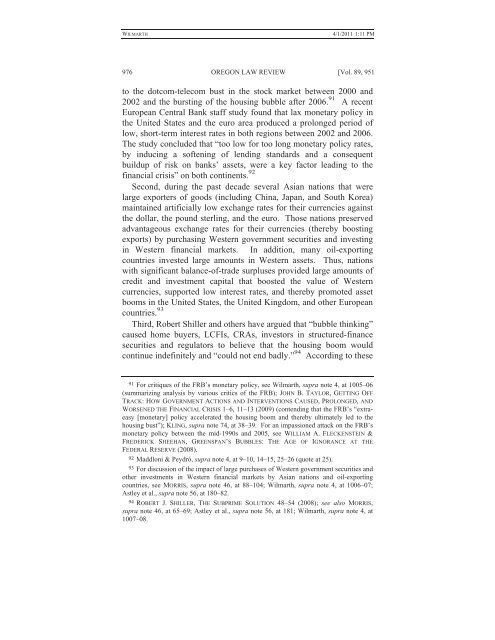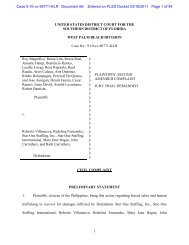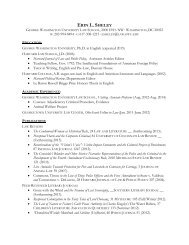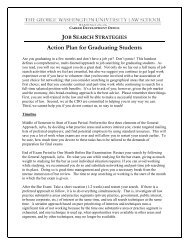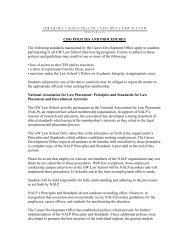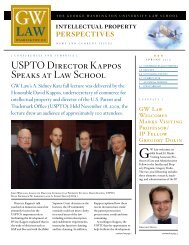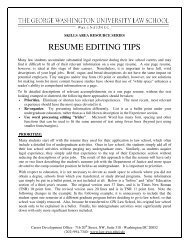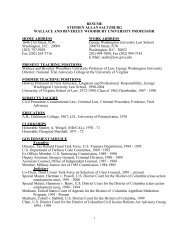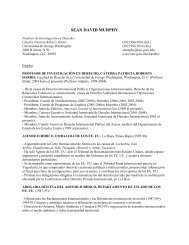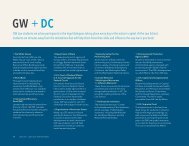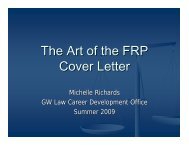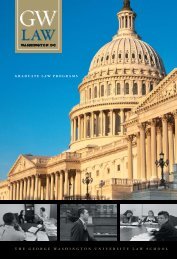CLE Materials for Panel #1 - George Washington University Law ...
CLE Materials for Panel #1 - George Washington University Law ...
CLE Materials for Panel #1 - George Washington University Law ...
Create successful ePaper yourself
Turn your PDF publications into a flip-book with our unique Google optimized e-Paper software.
WILMARTH<br />
4/1/2011 1:11 PM<br />
976 OREGON LAW REVIEW [Vol. 89, 951<br />
to the dotcom-telecom bust in the stock market between 2000 and<br />
2002 and the bursting of the housing bubble after 2006. 91 A recent<br />
European Central Bank staff study found that lax monetary policy in<br />
the United States and the euro area produced a prolonged period of<br />
low, short-term interest rates in both regions between 2002 and 2006.<br />
The study concluded that “too low <strong>for</strong> too long monetary policy rates,<br />
by inducing a softening of lending standards and a consequent<br />
buildup of risk on banks’ assets, were a key factor leading to the<br />
financial crisis” on both continents. 92<br />
Second, during the past decade several Asian nations that were<br />
large exporters of goods (including China, Japan, and South Korea)<br />
maintained artificially low exchange rates <strong>for</strong> their currencies against<br />
the dollar, the pound sterling, and the euro. Those nations preserved<br />
advantageous exchange rates <strong>for</strong> their currencies (thereby boosting<br />
exports) by purchasing Western government securities and investing<br />
in Western financial markets. In addition, many oil-exporting<br />
countries invested large amounts in Western assets. Thus, nations<br />
with significant balance-of-trade surpluses provided large amounts of<br />
credit and investment capital that boosted the value of Western<br />
currencies, supported low interest rates, and thereby promoted asset<br />
booms in the United States, the United Kingdom, and other European<br />
countries. 93<br />
Third, Robert Shiller and others have argued that “bubble thinking”<br />
caused home buyers, LCFIs, CRAs, investors in structured-finance<br />
securities and regulators to believe that the housing boom would<br />
continue indefinitely and “could not end badly.” 94 According to these<br />
91 For critiques of the FRB’s monetary policy, see Wilmarth, supra note 4, at 1005–06<br />
(summarizing analysis by various critics of the FRB); JOHN B. TAYLOR, GETTING OFF<br />
TRACK: HOW GOVERNMENT ACTIONS AND INTERVENTIONS CAUSED, PROLONGED, AND<br />
WORSENED THE FINANCIAL CRISIS 1–6, 11–13 (2009) (contending that the FRB’s “extraeasy<br />
[monetary] policy accelerated the housing boom and thereby ultimately led to the<br />
housing bust”); KLING, supra note 74, at 38–39. For an impassioned attack on the FRB’s<br />
monetary policy between the mid-1990s and 2005, see WILLIAM A. FLECKENSTEIN &<br />
FREDERICK SHEEHAN, GREENSPAN’S BUBBLES: THE AGE OF IGNORANCE AT THE<br />
FEDERAL RESERVE (2008).<br />
92 Maddloni & Peydró, supra note 4, at 9–10, 14–15, 25–26 (quote at 25).<br />
93 For discussion of the impact of large purchases of Western government securities and<br />
other investments in Western financial markets by Asian nations and oil-exporting<br />
countries, see MORRIS, supra note 46, at 88–104; Wilmarth, supra note 4, at 1006–07;<br />
Astley et al., supra note 56, at 180–82.<br />
94 ROBERT J. SHILLER, THE SUBPRIME SOLUTION 48–54 (2008); see also MORRIS,<br />
supra note 46, at 65–69; Astley et al., supra note 56, at 181; Wilmarth, supra note 4, at<br />
1007–08.


